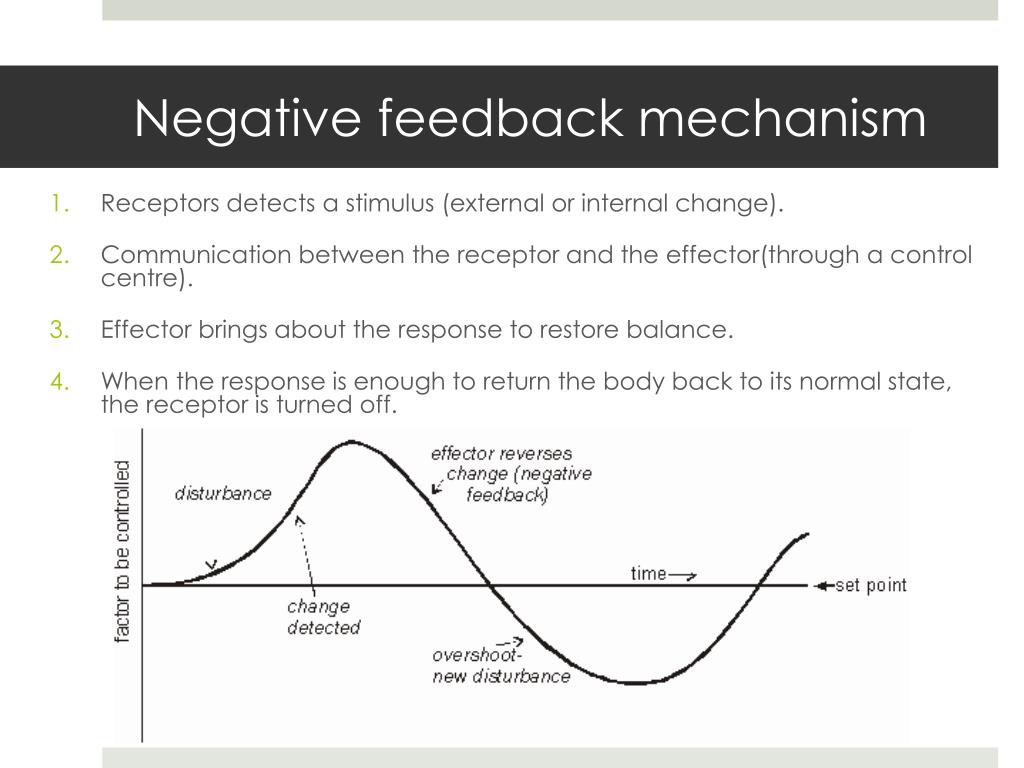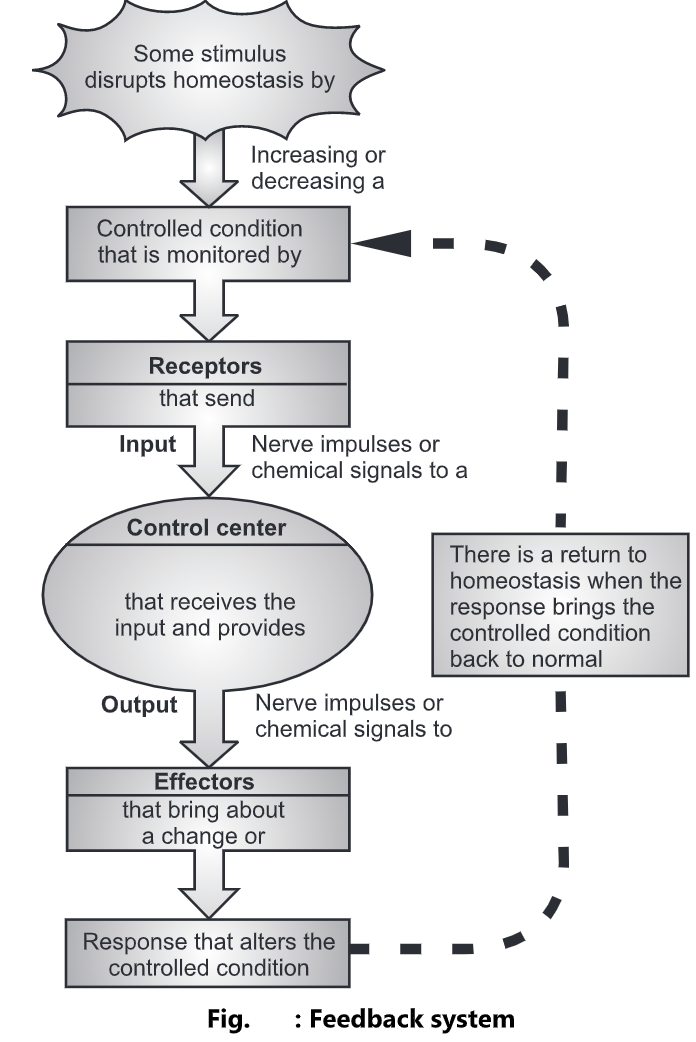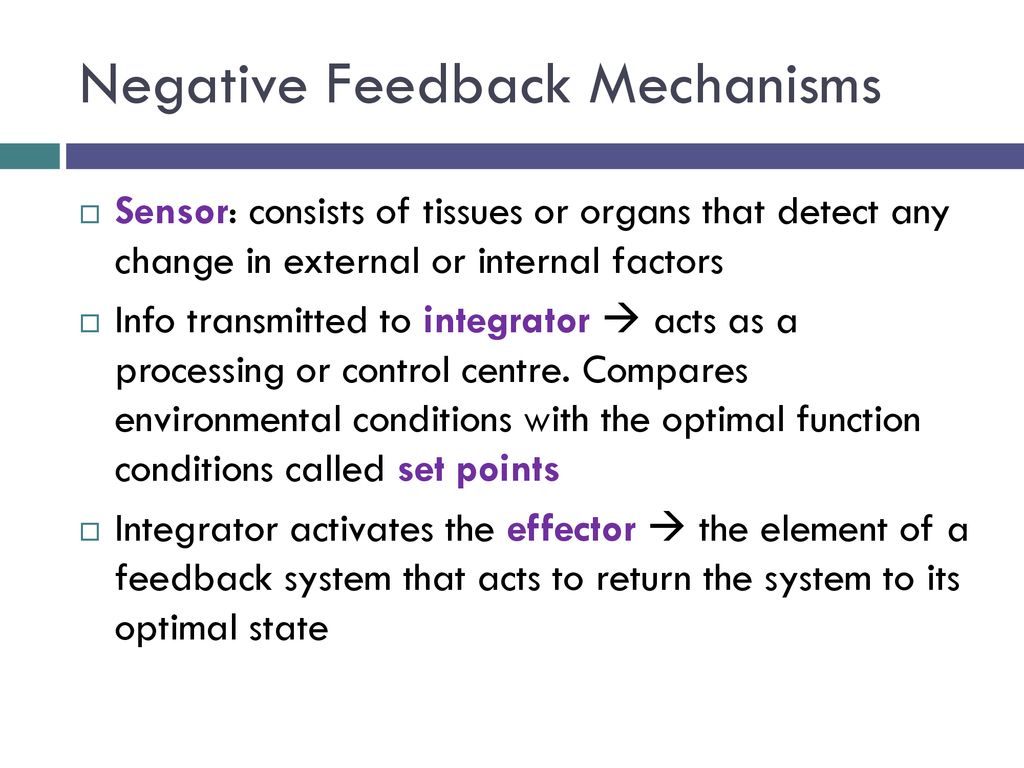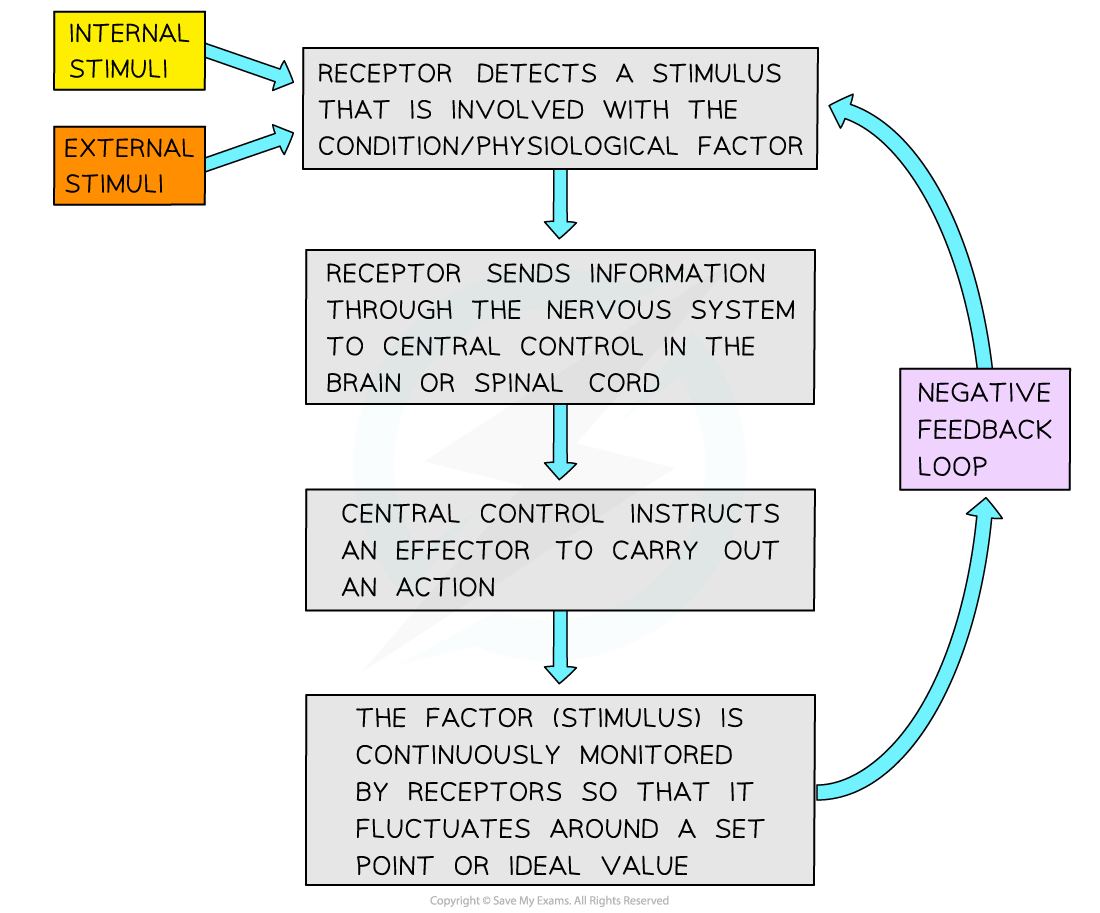In A Negative Feedback Mechanism The Response Of The Effector
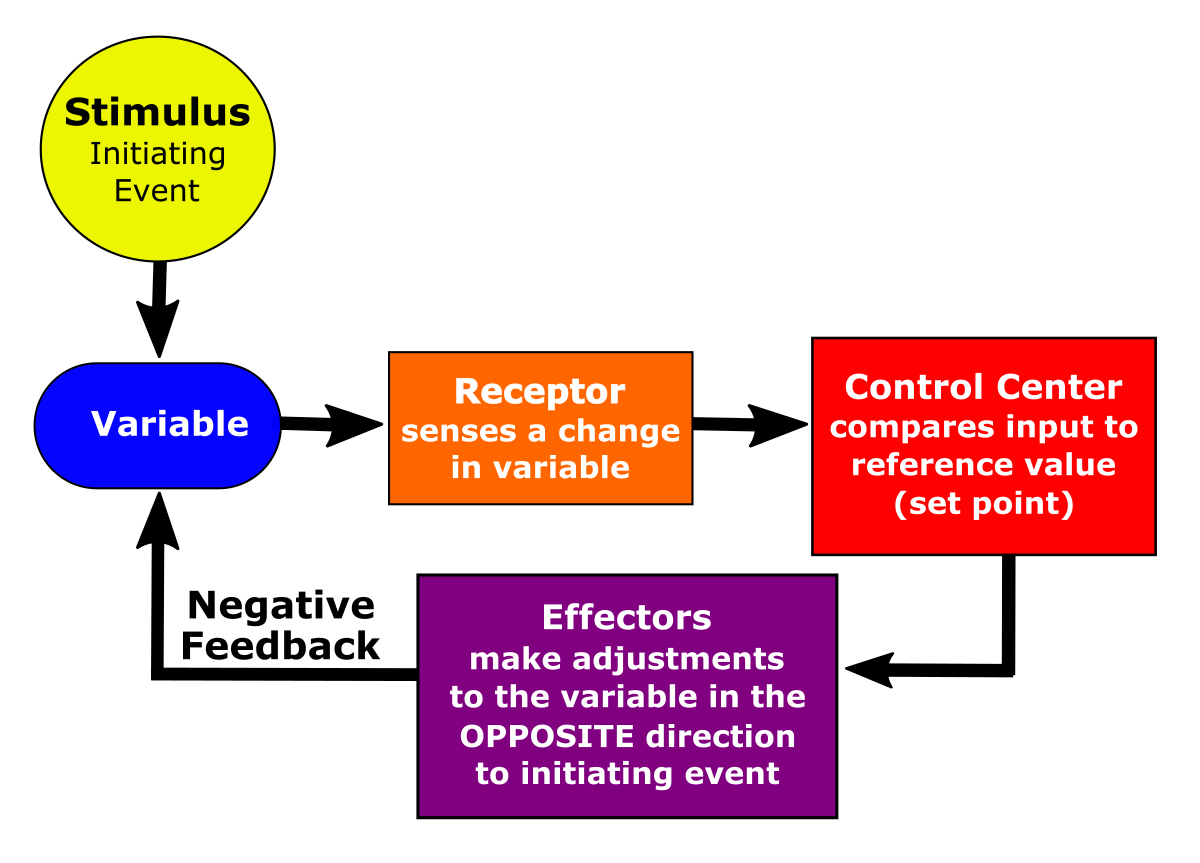
The human body, a marvel of biological engineering, constantly strives for stability. Maintaining this equilibrium, known as homeostasis, is crucial for survival. Disruptions to this delicate balance can trigger a cascade of events, highlighting the critical role of negative feedback mechanisms in restoring normalcy.
This article delves into the intricate workings of negative feedback loops, focusing specifically on the response of the effector. We'll explore how these mechanisms act as internal regulators, counteracting deviations from a set point and ensuring that vital bodily functions remain within acceptable parameters. Understanding the effector's role is paramount to comprehending the overall effectiveness and limitations of negative feedback.
Understanding Negative Feedback Loops
At its core, a negative feedback loop operates to reduce or eliminate the initial stimulus. It's a self-correcting system, designed to dampen change. This mechanism involves several key components working in concert.
First, there's the stimulus, a change in the internal environment. Next, the receptor detects this change and relays the information to the control center, typically the brain or an endocrine gland.
The control center processes the information and determines the appropriate response. Finally, the effector carries out this response, ultimately counteracting the initial stimulus.
The Effector's Crucial Role
The effector is the final link in the chain, the entity responsible for implementing the corrective action. Its response directly influences the magnitude and duration of the overall feedback loop.
The effector can be a variety of tissues or organs, depending on the specific parameter being regulated. For instance, muscles, glands, and even entire organ systems can serve as effectors.
Consider the regulation of body temperature. If body temperature rises above the set point, sweat glands (the effector) are stimulated to produce sweat. The evaporation of sweat cools the skin, lowering body temperature back towards normal.
Specificity and Sensitivity
The effector's response must be both specific and sensitive to ensure accurate regulation. Specificity refers to the effector's ability to target the appropriate physiological process.
For example, in blood glucose regulation, insulin specifically targets liver cells, muscle cells, and fat cells to facilitate glucose uptake. Sensitivity, on the other hand, refers to the effector's ability to respond to even small changes in the regulated parameter.
Highly sensitive effectors allow for fine-tuning of the internal environment. Insufficient sensitivity can lead to wider fluctuations and potential instability.
Types of Effector Responses
Effector responses can manifest in various ways, depending on the specific negative feedback loop. Some effectors produce a hormonal response, releasing hormones that travel through the bloodstream to target cells.
Others elicit a neural response, using nerve impulses to trigger a change in activity. Still others may produce a cellular response, altering metabolic processes within the cell itself.
For instance, in the regulation of blood pressure, both hormonal (e.g., release of adrenaline) and neural (e.g., changes in heart rate) effector responses are involved.
Limitations of Negative Feedback
While highly effective, negative feedback loops are not infallible. Several factors can impair their function, leading to disruptions in homeostasis.
Damage to the receptors or control center can prevent accurate detection and processing of the stimulus. Problems with the effector itself can also hinder its ability to respond appropriately.
Diseases like diabetes, for instance, can impair the function of the pancreas (the control center and an effector in blood glucose regulation), disrupting the negative feedback loop that controls blood sugar levels.
Clinical Significance
Understanding negative feedback mechanisms is crucial for diagnosing and treating various medical conditions. Many diseases arise from disruptions in these regulatory loops.
For example, hypertension (high blood pressure) can result from a malfunctioning negative feedback loop involving the kidneys and the cardiovascular system. Treatments often aim to restore or support the function of these mechanisms.
Furthermore, many pharmaceutical drugs are designed to mimic or modulate the effects of effectors in specific negative feedback loops, thereby restoring homeostasis.
Future Directions
Research continues to unravel the complexities of negative feedback mechanisms. Scientists are exploring the intricate interactions between different regulatory loops and their impact on overall health.
Advances in biotechnology and genetics hold promise for developing more targeted therapies to correct malfunctioning negative feedback systems. Personalized medicine, tailored to an individual's unique genetic makeup, may offer even greater precision in restoring homeostatic balance.
A deeper understanding of the effector's role in these mechanisms will undoubtedly be critical for developing future interventions. It offers the potential to revolutionize the treatment of a wide range of diseases, leading to improved health and well-being for all.


